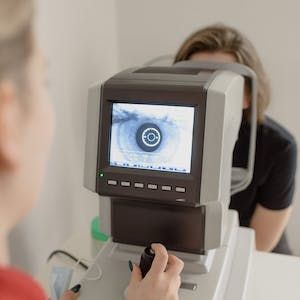Greater Baseline Retinal Nonperfusion Linked to Worsening Diabetic Retinopathy
An increasing retinal nonperfusion index was associated with a significantly higher risk of Diabetic Retinopathy Severity Scale worsening.

New findings from a 4-year longitudinal study suggest that both greater baseline retinal nonperfusion and the presence of predominantly peripheral lesions (FA-PPL) on ultra-widefield fluorescein angiography (UWF-FA) were associated with higher risk of diabetic retinopathy (DR) worsening.
These findings remained even following adjustments for baseline DR Severity Scale (DRSS) score, as well as individual-level risk factors including diabetes duration and glycemic control.
“These associations between disease worsening and retinal nonperfusion and FA PPL support the increased use of UWF-FA to complement color fundus photography in future efforts for DR prognosis, clinical care, and research,” wrote study author Adam R. Glassman, MS, Jaeb Center for Health Research.
Previous research observed the presence of predominantly peripheral DR lesions on UWF-FA was linked to greater risk of DR worsening, but there is uncertainty regarding the predictive nature of baseline retinal nonperfusion assessment on disease worsening.
Glassman and colleagues reported the 4-year longitudinal data from the Protocol AA UWF-FA in detail to determine the extent of UWF-FA retinal nonperfusion on disease worsening and if the association is independent of known risk factors for DRSS worsening.
They performed an analysis of a prospective observational longitudinal study conducted by the DRCR Retina Network at 37 clinical sites in the United States and Canada from February 2015 to March 2020. Adult participants with type 1 or 2 diabetes and ≥1 eye with nonproliferative DR (NPDR) on modified 7-field standard Early Treatment Diabetic Retinopathy Study (ETDRS) color photographic grading (ETDRS levels 35 - 53) were enrolled in the study.
The primary outcome of disease worsening was a time-to-event outcome, defined as worsening by 2 or more steps on the DRSS or receiving treatment for DR during the 4 years of follow-up. The DRSS score at baseline and follow-up visits were assessed within the ETDRS fields from the UWF-color images.
A total of 508 eyes were graded as having NPDR and gradable UWF-FA nonperfusion at baseline, among which 47 eyes (9%) did not have any nonperfusion identified. Baseline characteristics were identified as similar among the 4 subgroups, although eyes with greater nonperfusion had a larger proportion of patients with type 1 diabetes (T1D), longer duration of diabetes, more severe baseline DRSS score, and higher prevalence of FA PPL.
Data show the 4-year cumulative proportion of eyes meeting the primary disease-worsening outcome was 26% (95% CI, 15% - 43%) in the no-nonperfusion group and 43% (95% CI, 34% - 52%), 38% (95% CI, 30-47%), and 46% (95% CI, 38% - 55%) in the low-, medium-, and high-nonperfusion subgroups, respectively (HR, 1.11; 95% CI, 1.02 - 1.21; P = .02).
Multivariable analysis adjusting for baseline DRSS score and baseline systemic risk factors, greater NPI (HR, 1.11; 95% CI, 1.02 - 1.22; P = .02) and presence of FA-PPL (HR, 1.89; 95% CI, 1.35 - 2.65; P <.001) remained associated with disease worsening.
“These results suggest that retinal nonperfusion and FA PPL should be included in staging systems to predict risk of disease worsening over time,” Glassman added.
The study, “Association of Ultra-Widefield Fluorescein Angiography–Identified Retinal Nonperfusion and the Risk of Diabetic Retinopathy Worsening Over Time,” was published in JAMA Ophthalmology.